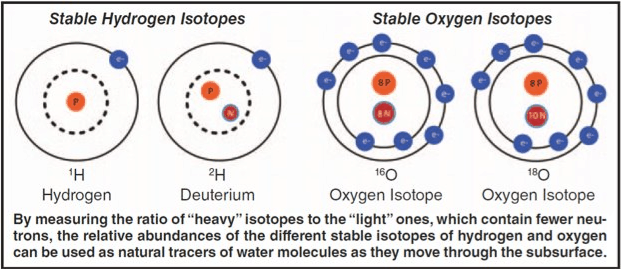Water Stable Isotope Analysis
2H / 1H and 18O / 16O
One technique that has been used for decades to delineate the origin and mixing of distinct water sources in hydrogeologic studies is the stable isotope analysis of water (e.g., Craig, 1961; Gat & Gonfiantini, 1981; Rostron & Holmden, 2000). Oxygen and hydrogen stable isotopes are highly effective conservative tracers because they are innate to the hydrogen and oxygen atoms that make up the water molecules.

This makes them excellent candidates for determining the source of water produced during the production of an oil and gas well. Utilizing these naturally occurring isotopic tracers, DIG’s scientists and engineers have used this technique to help operators:
- Differentiate water injected during stimulation from native formation waters
- Determine the mix of frac water versus formation water produced during flowback and production
- Track the magnitude and duration of well cleanup after completion
- Predict which wells intersect major fault and fracture networks
- Identify additional sources of water contributing to anomalous water cuts
Click here to read and download DIG’s American Oil and Gas Reporter article on the water stable isotope analysis of 1500+ samples collected from the DJ Basin!
Contact DIG to get more information about Water Stable Isotope Analysis and what it can do for you today!
Other useful resources:
University of Utah: Global Water Isotope Database
USGS Primers on Oxygen and Hydrogen Water Stable Isotopes

